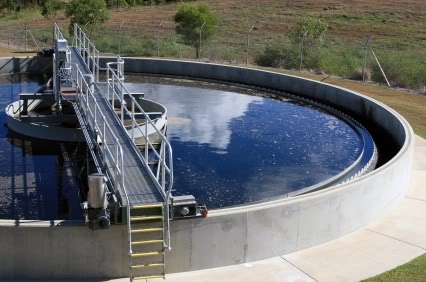New Nitrogen Dioxide Ambient Air Quality Standard Could Pose Challenges
In the more than 200 air quality modeling analyses that ALL4 meteorologists have conducted, demonstrating compliance with the annual nitrogen dioxide (NO2) National Ambient Air Quality Standard (NAAQS) of 53 parts per billion (ppbv) has rarely been an issue. The relative ease for demonstrating compliance with the annual NO2 NAAQS is due to two (2) factors. First, the NAAQS for NO2 is an annual standard and thus any adverse dispersion that could occur based on “worst-case” meteorological conditions in dispersion modeling is averaged over the course of a year, minimizing its effect. Second, U.S. EPA recommends the use of scaling factors to adjust the modeled concentrations of oxides of nitrogen (NOx) to reflect the fact that NOx is converted to NO2 after being emitted from the source. This adjustment results in a reduction of the modeled annual concentrations. U.S. EPA has elected to retain the existing annual NO2 NAAQS of 53 ppbv.

Pennsylvania Proposes to Adopt Effluent Standards for New High TDS Wastewater Discharges
The Pennsylvania Department of Environmental Protection (PADEP) is proposing to amend 25 Pa. Code Chapter 95 (relating to Wastewater Treatment Requirements) to establish new effluent standards for new sources of wastewaters containing high Total Dissolved Solids (TDS) concentrations. The Environmental Quality Board (EQB) published the proposed rulemaking in the November 7, 2009 PA Bulletin (39 Pa.B. 6467), held four (4) public meetings across the State in December 2009, and accepted comments on the amendments through February 5, 2010. The TDS effluent standards would apply to any new “high TDS” wastewater discharge that did not exist on April 1, 2009 as well as any new additional discharge, expanded discharge, or increased discharge from a facility in existence prior to April 1, 2009. A “high TDS” wastewater discharge is considered a TDS concentration that exceeds 2,000 mg/l or a TDS loading that exceeds 100,000 pounds per day. Included in the proposed rulemaking for affected effluents are monthly average discharge limits of 500 mg/l of TDS, 250 mg/l of total chlorides, and 250 mg/l of total sulfates.
Industrial facilities, including surface and underground mining, electric power plants, cement plants, chemical manufacturers, food manufacturers, pharmaceutical manufacturers, iron and steel manufacturers, and other facilities that have existing discharge levels that exceed the proposed limits may be impacted by the proposed regulatory action. As a result of these proposed regulatory amendments, new or increased discharges will be required to install advanced treatment to meet the new TDS, total chloride, and total sulfate effluent requirements. Existing industrial sources of high TDS wastewaters would be able to continue to operate under their existing permit limits and conditions until such time that they propose to expand, increase, or add new wastewater discharges. New or expanded high TDS wastewater sources would not be permitted unless the applicant proposes to install adequate treatment (e.g., reverse osmosis, ultra filtration, or evaporation/crystallization) by January 1, 2011. PADEP anticipates that the cost of advanced treatment to meet the new standards would cost approximately $0.25 per gallon. Industry sources have stated that the mandated level of treatment would require tremendous capital and operating costs, and may create new environmental issues, such as increased energy use, increased air emissions, and additional waste generation in the form of dewatered salts.

The proposed amendments will go into effect upon publication in the Pennsylvania Bulletin as final-form rulemaking. Facilities with existing wastewater discharges, particularly those with plans to modify, expand, or increase discharges or facilities that accept off-site wastewater for treatment should evaluate the quality of their existing discharge and the potential impact of the proposed new regulatory limits. A copy of the proposed rule can be viewed here.
Air Modeling Dispersion Program Update
The Air and Waste Management Association (AWMA) held a conference entitled Guideline on Air Quality Models: Next Generation of Models in Raleigh, NC from October 28 – 30, 2009. During the conference representatives from U.S. EPA’s Air Quality Modeling Group (AQMG) announced that they would be releasing new versions of AERMOD preprocessors AERMET and AERSURFACE in the not-too-distant future. AERMOD is U.S. EPA’s preferred air dispersion model for evaluating impacts up to 50 kilometers from the source. AERMET is the preprocessor to AERMOD that processes meteorological data for input into AERMOD. Some new features of the updated version of AERMET include the ability to average sub-hourly onsite meteorological data and the use of the station elevation for pressure calculations. In addition, a separate processor to calculate hourly meteorological data from 1-minute Automated Surface Observing System (ASOS) data will be included. AERSURFACE, which is used to calculate micro-meteorological variables from land use patterns, is being updated to allow it to process 2001 National Land Cover Data (NLCD). There also may be the option to incorporate aerial photography data into AERSURFACE for areas in which the 2001 NLCD is not representative of current land use patterns. U.S. EPA also indicated that a release of the AERMOD screening tool AERSCREEN would also be coming soon. AERSCREEN could be used as a screening tool to calculate ambient pollutant concentrations when no meteorological data is available. The screening tool uses a matrix of worst case meteorological conditions in the place of collected meteorological data to calculate ambient concentrations. When released, these updated programs will be available here.

Boiler MACT and CISWI Test Data Available On-Line
Last summer, U.S. EPA notified over 100 facilities that they were being called upon to conduct stack testing as part of the Agency’s information gathering efforts to address the vacated National Emissions Standards for Hazardous Air Pollutants for Industrial, Commercial, and Institutional Boilers (Boiler MACT) and the Commercial and Industrial Solid Waste Incinerator (CISWI) rule. 
The GHG Monitoring Plan Due Date is Approaching. Will You Be Ready?
U.S. EPA’s Greenhouse Gas Mandatory Reporting Rule (GHG MMR) codified at 40 CFR Part 98 requires that facilities subject to the rule have a complete written GHG Monitoring Plan by April 1, 2010. At a minimum, a GHG Monitoring Plan must identify:
- The methods used to collect GHG emissions information and supporting data,
- The personnel responsible for collecting the data, and
- The quality assurance, maintenance, and repair methods for all measurement devices used to collect data.
Facilities must maintain their written GHG Monitoring Plan onsite in an electronic or hard-copy format. If requested by U.S. EPA, a facility’s GHG Monitoring Plan must be made available expeditiously for inspection and review.
The GHG MRR is a new rule, currently made up of 30 different subparts that apply to a wide variety of facilities. Developing a GHG Monitoring Plan is the first step of implementation for facilities that are affected by this new rule. This first step involves a thorough analysis of the facility-specific characteristics and operation of combustion units and process units as they relate to the requirements of the GHG MRR. The GHG Monitoring Plan must present how all of the required detailed information about fuels and process parameters is generated, managed, and confirmed.


